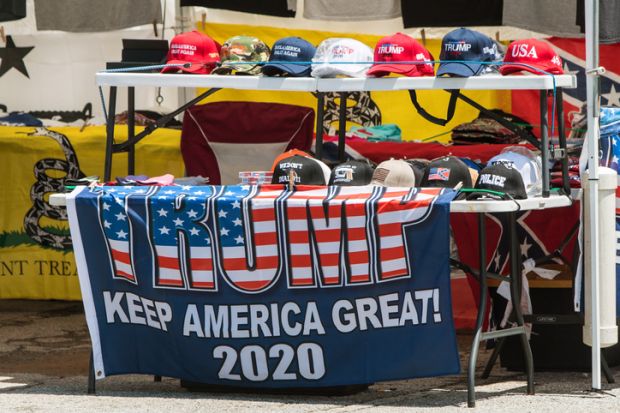As world leaders met for the annual World Health Assembly online on 18 May, more than 140 prominent figures, including current and former premiers, had signed an open letter calling on governments to unite behind a people’s vaccine against Covid-19. Among other things, this calls for any vaccine to be “patent-free”.
A notable absentee from the list of signatories is Donald Trump who has, in line with his “America First” approach, made clear his intention to secure exclusive rights to a vaccine.
By contrast, a UK government policy paper calls for solutions to “be as open source as possible with the ability for components, consumables, chemicals and digital components to be produced by a range of manufacturers – quickly and easily.”
Is open source the answer? Maybe. The philosophy of open source is to foster a common purpose, where everyone contributes to the solution and everyone benefits. But, contrary to popular opinion, open source does not mean patent-free. Nor are intellectual property monopolies, such as patents and registered design rights, always about securing profits.
Counterintuitive as it may seem, patents and intellectual property could be powerful weapons against Trump – in an open source model that makes any vaccine available globally on ethical terms that are legally enforceable.
This can be seen by exploring the following scenario. Following rigorous clinical trials that demonstrate its efficacy, a university research term successfully develops and publishes a vaccine. In theory, the open source approach means that it will be free for the world to use. However, the reality will be different.
Why? Because the vaccine now needs to be administered to 7.5 billion people. No one has any legal right to stop anyone else from manufacturing, importing or selling the vaccine – but raw materials are limited, supply chains are subject to political influence and other practical obstacles stand in they way of this unprecedented challenge.
The biggest players will use their market share and deep pockets to control the supply of key vaccine components needed for vaccine manufacture and distribution. Hence, the vaccine has not really been open sourced. In any meaningful sense, the university has relinquished all control.
Now let’s consider an alternative scenario. Before publishing the vaccine, the university applies to patent it in the US. Once this is granted, they control what can and cannot be done with it in the US jurisdiction. Anyone who wants to sell or import the vaccine needs the permission of the university. And that concentration of power in the university’s hands can be used for the greater good.
The university will likely grant the requested permission – but with stringent ethical conditions attached. For example, one condition could be that any company wishing to manufacture and distribute the vaccine in the US also has to manufacture and distribute to other countries around the world.
In this scenario, the university’s legal monopoly puts them on a level playing field with the big players who would otherwise have a commercial monopoly. (An irony that might be lost on President Trump is that the university’s right to secure this monopoly is bestowed by the US constitution).
This, in a nutshell, is a true open source model: one that recognises that “open source” and “patent-free” are not the same thing. An open source licence is just that: a licence. If you have no intellectual property rights to license in the first place, you cannot stop others from taking something that you have no right to give.
Traditionally, the open source model has been applied to software – and the legal rights at the heart of the licence are often forgotten about because they automatically come into existence at the point of creation. This is called copyright and it protects software because computer code is considered a “literary work” created by an author (the coder). But copyright law is old and it does not apply to the creation of vaccines. If you want to dictate the terms on which a vaccine is released into the world, a patent is your only option.
Ownership of intellectual property has good and bad outcomes because property is owned by good and bad people. Patents and intellectual property are no exception.
If the UK’s National Trust owns a piece of land within an area of outstanding natural beauty, the charity can keep it open to the public while also preventing Donald Trump from turning into a golf course. If a university takes the same approach to a Covid-19 vaccine, it could similarly pitch Trump’s proprietorial ambitions into the bunker.
Virginia Driver and Tom Woodhouse are partners at IP specialists Page White and Farrer.
Register to continue
Why register?
- Registration is free and only takes a moment
- Once registered, you can read 3 articles a month
- Sign up for our newsletter
Subscribe
Or subscribe for unlimited access to:
- Unlimited access to news, views, insights & reviews
- Digital editions
- Digital access to THE’s university and college rankings analysis
Already registered or a current subscriber? Login








